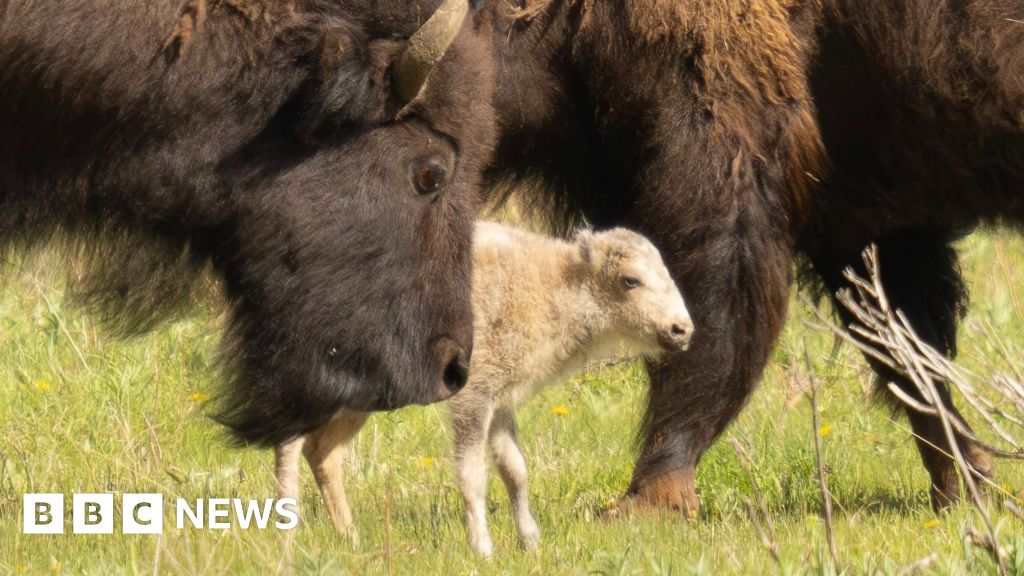1 hour agoBy Max Matza, BBC News, Seattle
Indigenous communities in America are celebrating the birth of a rare white buffalo calf. With its cream-colored fur and jet-black eyes, this small specimen of America’s largest native animal has captured the attention of advocates and tribal communities alike.
The birth of the white buffalo calf in June is a significant event, as it is considered a sacred omen that symbolizes change by many tribes. This calf was born into the last remaining wild buffalo herd in North America, making it an important cultural symbol for indigenous communities.
The American buffalo, also known as bison, was once on the brink of extinction in the 1800s, but efforts are now being made to revive the species in the Great Plains. Yellowstone National Park, home to the white calf, is considering expanding the wild herd’s size for the first time in decades, presenting an opportunity for tribes and bison advocates.
The birth of the white calf, named Wakan Gli meaning Sacred Returns in the Lakota language, has brought together over 500 supporters from nearly a dozen tribes to celebrate this spiritual event. The calf’s arrival is seen as a sign of healing and unity among people.
The return of buffalo to tribal lands marks a significant change in federal policy towards the species. Efforts are being made to increase the size of the Yellowstone herd and support the growth of bison populations, despite concerns from ranchers and commercial interests.
For tribes, the white calf’s birth is a reminder of the importance of protecting and preserving the buffalo, a species that holds deep cultural and spiritual significance. The event has reignited discussions about bison management and conservation efforts, as indigenous communities continue to advocate for the restoration of the species.

